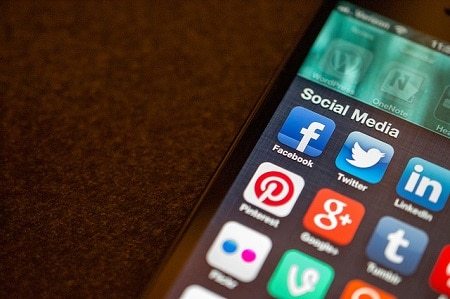
Many businesses spend the majority of their marketing budgets on innovative marketing strategies that don’t yield favorable results.
The problem is an app’s target audience likely still prefers more traditional strategies. Of course, it helps to put a unique twist on the old, but older methods still work quite well.
When it comes to marketing your new app, look to the methods that have worked for years. They’re effective for a reason. Mobile users are used to these methods and connect better with them.
1. Social Media
Social media might not seem traditional, but social media marketing has been around for over a decade. Targeted ads, promoted posts and social only discounts allow you to market an app to millions. Think of it as the digital version of placing an ad in a newspaper. Come up with creative looking ads and headlines to make this strategy more effective.
2. Ask For Reviews
Mobile users are more likely to trust a new app if they see an unbiased review for it. It’s difficult to gain reviews in an app marketplace if no one knows about your app yet. Many high authority sites focus on reviewing the latest mobile devices and apps. Some focus on strictly Android or iOS. Ask the site owners if they’ll review your app. Try to schedule a review as early as possible to build buzz about your app.
Alternately, offer a free download of your app to a set number of users on social media. Ask for an honest review in exchange for the app.
3. Television Ads
Television ads are still a highly effective way to market your new app. While many apps haven’t tried this approach yet, the ones who have are seeing a higher number of initial installs and an increased number of sessions per user. For instance, Ucool’s Heroes Charge boosted their install numbers by over 4% right after their ad. Though the number of active users dropped not long after, the number of sessions per user increased by 69%.
Some apps have taken a slightly different approach by paying to have their app mentioned in a TV show. The key is to make sure the app mention fits into the show itself without seeming like a blatant product placement.
An alternative to standard TV ads is to place ads on YouTube videos. This is one way to make sure your ad is seen and not skipped over or ignored while your audience gets up during commercial breaks.
4. Offer Coupons
Old fashioned coupons and discounts are yet to lose steam when it comes to marketing. For instance, an app for locating restaurants might offer a 50% off coupon to specific restaurants for all new users. If the app allows the user to shop, a loyalty program for purchasing within the app or entering details about the purchase also works.
Starbucks uses the loyalty method to increase how many users pay via the app. Thanks to the rewards program, the mobile payment app accounts for over 16% of the company’s weekly sales.
5. Market At Events
Large mobile conferences across the world give app developers a chance to promote themselves in front of potential users and reviewers. It does require a more traditional approach of actually meeting with users face to face. For apps targeting a wider audience, especially games or innovative news, weather or shopping apps, might find this strategy more effective than smaller, more targeted apps, such as a local news app.
6. Print Ads
Despite what you might read online, print isn’t dead. Print magazines and newspapers are still read by millions, especially the generations that grew up with print media as their main source of information. Placing ads in highly circulated magazines and newspapers boosts awareness of your app. Offering a way for users to enter a code to get a discounted download or in-app purchase could further boost your number of downloads.
7. Partner With Other Apps
Businesses have been partnering with other businesses for centuries. The same strategy is still useful today for app marketing. Games are one of the more prominent examples of this approach. For instance, a developer with a new game might partner with another developer to advertise their app. When users click on the ad, they receive a special offer such as free in-app currency or exclusive features.
For other types of apps, simply advertising within other apps works well. Another strategy is to exchange recommendations with complimentary apps. By recommending each other, both apps benefit.
Conclusion
App marketing doesn’t have to be overly complicated. Putting your own unique spin on traditional marketing is all you really need to do. Focus on creating a more traditional marketing strategy as your app is being developed. Then, you’re ready to tell the world about it as soon as it’s released.
Want to make sure you have a high quality app to market? Contact StuartMedia for professional app development that your audience will love.
Image: Jason Howie